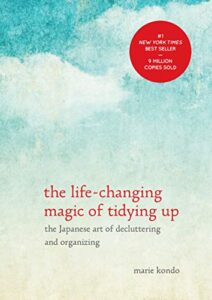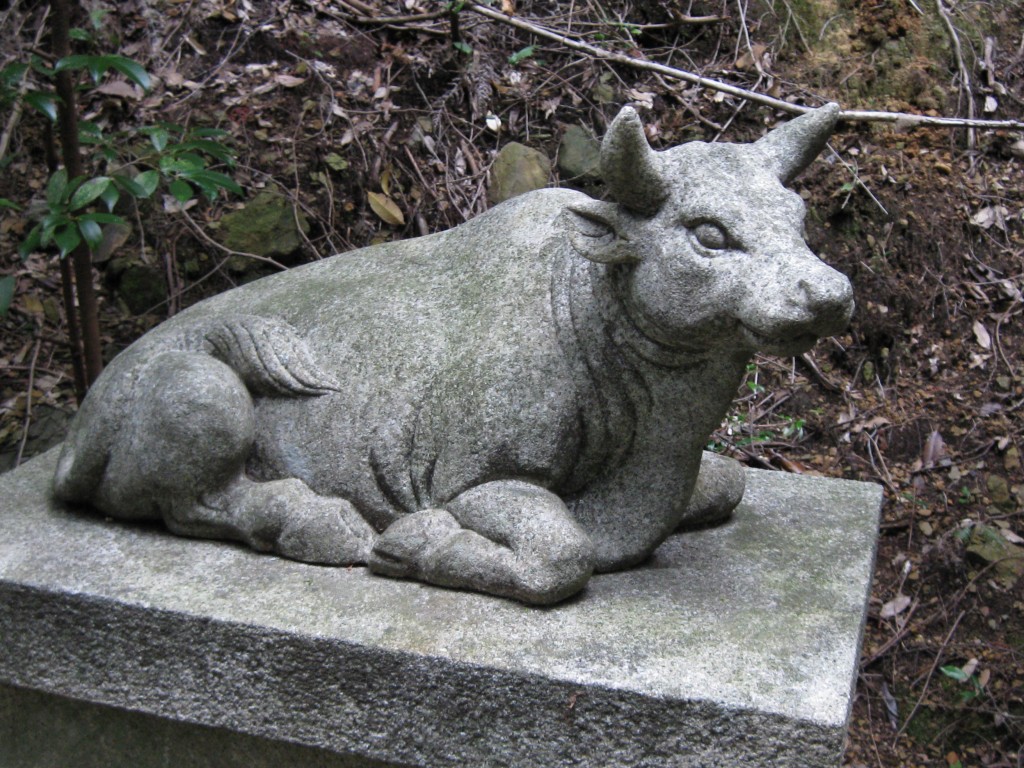
Previous postings in this series looked at trees (natural phenomena) and a subshrine of Yasui Konpira-gu in Kyoto which exemplifies the animist strand of Shinto. In this third posting we look at a world-famous individual with beliefs shaped by the religious heritage of Japan.
Through her books and television series on decluttering, Marie Kondo has achieved the status of a lifestyle guru. It’s a sad indictment of our time that over-consumerism has become such a problem that we need advice in how to cope with discarding unwanted material possessions. While much of the world has not enough to live on, privileged firstworld citizens have too much of everything.
What’s striking about Marie Kondo is the spiritual manner with which she approaches a simple physical task. She starts off, for instance, by greeting the house where she will work as if it is a living being – a kami, even. ‘I began this custom quite naturally based on the etiquette of worshipping at Shinto shrines,’ she says in The Life-Changing Magic of Tidying Up (p. 188).

She goes on to say that ‘The tense expectancy in the air when a client opens the door resembles the atmosphere when one passes under a shrine gate and enters the sacred precincts.’ Speak to your house and it will respond is her underlying message. The house has a soul, and so do its contents.
One of her key principles is to only keep items that serve as a source of joy. One might imagine that the mountain of unwanted things would be nonchalantly dismissed and discarded. However, these too must be shown respect and thanked before being sent off. Even then, they will leave behind the energy of wanting to be of service. This reminds one of the religious custom in Japan of mortuary rites for thanking unwanted dolls, or sewing needles, or ink brushes before their final sending off.
Behind Kondo’s thinking is the idea that objects absorb and transmit energy. This is particularly evident with things that are regularly touched, such as clothing. ‘As you run your hands over the cloth, you pour energy into it,’she says. ‘Therefore when you fold, we should put our heart into it, thanking our clothes for protecting our bodies.’
‘I began to treat my belongings as if they were alive when I was a high school student,’ Kondo asserts towards the end of her book (p.169). It’s this assumption that has proved vital in bringing her worldwide success based on a deep respect for what is normally dismissed as useless clutter.
It’s an attitude to the physical world that runs through Japanese culture. It means a greater respect for things, and an awareness that secondhand goods come bearing the spirit of their previous owner. Pottery is revered for those who have touched it in previous generations, and the thinking has enabled excellence in carpentry and numerous other crafts in which the raw material is treated with deep understanding. In this way it can be seen that Kondo is no kook, but heir to an ancient tradition that recognises the spirit in the sword, the anima in the inanimate.


Too much shopping aside, I enjoyed how her book and netflix series addressed the guilt and pain involved in giving away items which were a gift or belonged to a family member who has passed away. As you get older, it’s easy to live in a grief museum of objects you don’t enjoy or use.
Yes, agreed. There’s a sense of attachment which makes parting painful, but rituals help to deal with this. That’s one of the strengths of Kondo’s method, I feel…
Thank you for this post…
Bringing attention to the connected cords of relationship and kami seems like a crucial skill set in this moment of human life.
I happen to work as a professional organizer, and have been noticing Kondo’s shinto roots. My professional association has a group of holistic organizers and I hope to do a presentation on incorporating shinto in the next few years, so any posts relating shinto, to how we live every day will be most appreciated. So much of my profession comes from a germanic reductionist linear perspective, which has it’s place, but I love the magical yet real perspective Kondo brings (kitchen sink magic)
For almost 4 years I have been reading your blog. It has inspired me to slowly start my own practice here in North America. Next month I will go to the Tsubaki Grand Shrine for my shrine visit and to recieve/participate in the 2nd half of year blessing. Thank you for so much inspiration on how to practice Shinto in my own quirky way.
Thank you for taking the time to write in about your quirky Shinto exploration. I’m sure you’ll find much to inspire you at Tsubaki Grand Shrine. It has a wonderful setting and some beautiful woodwork. Be sure to ring the bell and see if you can find my name there…
It’s just too simplistic to say that Kondo’s ideas about cleaning up are in any way connected to Shinto. Sorry to be negative….
https://marginalia.lareviewofbooks.org/domesticity-spirituality-kondo-not-animist/
‘The reality is, the concepts of “Shintō” and “gentle animism” that Kondo’s defenders deploy instantiate the very racism they seek to challenge. Her defenders are trading in shockingly Orientalist fantasies about timeless Asian wisdom and white ignorance, and some of them seem to have little awareness of how Japanese auto-narratives perform political work.’ And more.
Thank you for the warning note, Elizabeth…
But the author of the article himself acknowledges the connection: “To be sure, Kondo’s defenders are on solid ground when they tie her method to Shintō. Kondo claims that her early experience as a shrine maiden (miko) helped develop her current tidying business.” So then I found this a little condescending, as is true of so many takes on Kondo: “But we should never trust just one informant, even a former shrine maiden, when trying to understand a complex tradition.” I wasn’t sure exactly what he was getting at. She isn’t claiming that her method *is* a Shinto method, just that her experience influenced the development of her method. The Orientalist projections of Western readers shouldn’t delegitimize her authority over her own experience. I find people read reactions to her work much more closely than they read her book, and react to the takes rather than her own words.
From the perspective of modern science, all matter is manifested energy i.e. the spin / vibration of subatomic particles, atoms and molecules coupled with the interplay of photons.
In fact because photos travel at the speed of light altering space and time itself, they represent the most ethereal component of the cosmos as they bridge the physical and our sense of the divine. This energy field, in turn, can also be interpreted as the movement of ch’i ( or the Japanese version “ki”). including feng shui. Therefore, within this framework, the interpretation of “clutter” as a form of energy ( in both past and present form) makes perfect sense